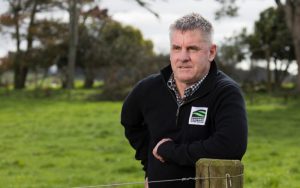
Two West Coast farms will be the focus of a composting ‘mootel’ project that aims to analyse the design, capital costs and process of converting to a mootel system.
The nine-month study is one of 12 projects funded by Our Land and Water Rural Professionals Fund to test innovative ideas. On the West Coast, two dairy farms have recently installed composting mootels to improve productivity with better environmental outcomes and they will be used to collect the data for the project.
Robb Macbeth from Rural Consulting is part of the project team that will produce a transition map for farmers contemplating the move to composting mootels, plus a report on the pros and cons of integrating the mootels into a West Coast farming system.
Robb says composting mootels are relatively new innovations in New Zealand with little real-world data examining the financial, environmental and biophysical attributes, costs and benefits of the systems.
The project will build on a previous desktop assessment that looked at whole-systems impact of composting shelters in NZ and use the two real-world farms that are using composting mootels. The farms – one near Lake Brunner and the other at Inangahua – have installed the mootels in the past 12 months in a region that Robb describes as a challenging place to farm due to its high rainfall and remoteness.
They will compare pre- and post-composting mootel data and have a focus on capital costs, design specifications and financing.
“We will look at the financials such as what did it really cost with things like extra concrete and extra machinery. Would the farmers have done anything differently? Is there any more profit?”
At the same time the project will look at what is happening to all the nutrients and whether the mootels are making a difference to nitrogen leaching across the property.
Collecting data will show whether the mootels are making the business more environmentally friendly.
The difference between composting mootels and other dairy housing structures is the composting process that occurs within the loafing area. Cows spend a proportion of their time in the mootels where they lie on a deep bedding of plant-based material such as sawdust, wood shavings, wood chip or similar.
Aerobic composting aided by daily tilling and ventilation mixes the bedding with dung and urine that composts. The heat generated from composting keeps the bedding dry and usable for a year or more. After that it is removed from the mootels and can be spread over paddocks as an organic fertiliser.
Robb says in theory, the compost vapourises much of the cows’ urine if the compost temperature is between 50 and 60C and there is good ventilation. The project will be able to collect data to measure the carbon-to-nitrogen ratios in the composting area.
Other aspects can be considered such as the availability of woodchip or other possibilities for bedding and how long the compost lasts as bedding.
At least two workshops will be held on the farms during the nine-month project for other farmers to find out more about the composting mootels. By the end of the project, they will have initial data on whether there is any increase or decrease in production on the farms, change in somatic cell counts or other aspects that can be attributed to the composing mootels.
That will be based on just one season though and Robb says the team hopes to be able to extend the study if it can secure funding so they can get a longer-term picture of the mootels.























